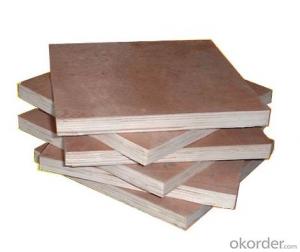Acoustic Plywood: Soundproofing Your Rooms with Style
Have you ever been annoyed by the constant noise from your neighbors or the traffic outside? Do you find it hard to focus on your work or enjoy a peaceful moment in your home? Well, it’s time to consider soundproofing your rooms, and acoustic plywood is the perfect solution for you. This versatile material not only helps to reduce noise but also adds a touch of style to your living space. Let’s dive into the world of acoustic plywood and explore its benefits, installation process, and design ideas.
The Science Behind Acoustic Plywood
Before we get into the details, it’s essential to understand the science behind acoustic plywood. Soundproofing materials work by absorbing sound waves and preventing them from reflecting off surfaces. Acoustic plywood is designed with a high density and specific thickness to effectively absorb sound and reduce noise levels. The material is made from layers of wood veneer that are glued together, creating a robust and durable product.
Benefits of Acoustic Plywood
There are several benefits to using acoustic plywood for soundproofing your rooms. Firstly, it is an eco-friendly option as it is made from natural wood materials. Secondly, it is cost-effective compared to other soundproofing solutions. Thirdly, it is easy to install and maintain, requiring minimal effort. Lastly, it adds a warm and inviting touch to your interior design, enhancing the overall aesthetics of your space.
Installation Process
Installing acoustic plywood is a straightforward process that can be done by following these steps:
1. Measure the area you want to soundproof and purchase the appropriate amount of acoustic plywood.
2. Clean the surface where you will be installing the plywood to ensure it is free of dust and debris.
3. Apply an adhesive to the back of the plywood and stick it to the wall or ceiling.
4. Use a roller to press the plywood firmly against the surface, ensuring there are no air bubbles or gaps.
5. Trim any excess material with a utility knife and clean up any residue.
6. Allow the adhesive to dry for the recommended time before using the space.
Design Ideas with Acoustic Plywood
Now that you know the basics, let’s explore some design ideas to incorporate acoustic plywood into your home. You can use it as a decorative wall covering, create feature walls, or even use it for ceiling panels. Here are a few ideas to get you started:
– Use acoustic plywood for a feature wall in your living room or bedroom to create a cozy and inviting atmosphere.
– Incorporate acoustic panels as part of a home theater setup for an immersive audio experience.
– Use acoustic plywood for the ceiling to reduce echo and improve sound quality in a music room or recording studio.
– Create a unique and stylish room divider using acoustic plywood panels.
– Experiment with different patterns and textures by combining acoustic plywood with other materials like fabric or metal.
The Future of Acoustic Plywood
As more people become aware of the importance of soundproofing and interior design, the demand for acoustic plywood is expected to grow. Manufacturers are continuously developing new products and techniques to improve the performance and aesthetics of acoustic plywood. In the future, we may see advancements in materials that offer better sound absorption, easier installation, and more design options.
In conclusion, acoustic plywood is an excellent choice for soundproofing your rooms while adding a touch of style. It is a cost-effective, eco-friendly, and easy-to-install solution that can transform your living space into a peaceful and comfortable environment. Whether you’re looking to improve your focus, enjoy your hobbies, or simply create a more inviting atmosphere, acoustic plywood is the perfect addition to your home.

